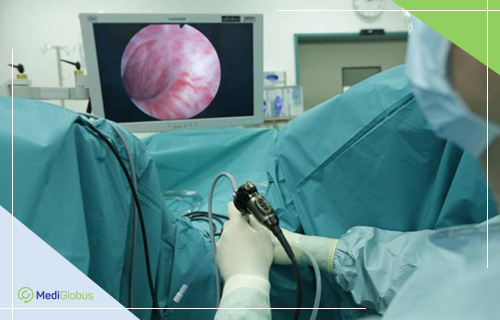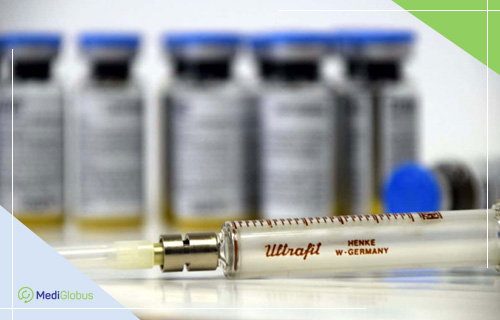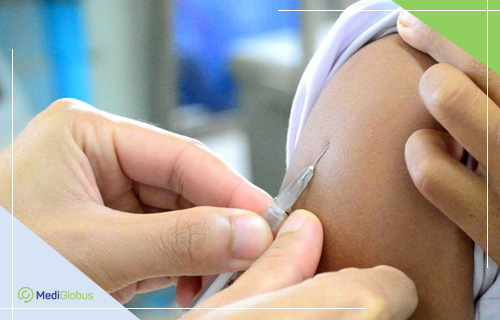The success of any cancer treatment depends on how far the cancer has processed. The stage of prostate cancer says a lot about what type of treatments can be used and what are the chances of cure. In this article, MediGlobus experts will tell you which methods are effective for different degrees of malignant process in the prostate.
PROSTATE CANCER STAGING
To identify the stage of prostate cancer, three basic classifications are used:
classification according to the degree of malignancy of the neoplasm – the Gleason score from 2 to 10 (carrying out a histological evaluation of the differentiation of tumour samples obtained with the biopsy of the prostate gland);
classification according to the level of PSA in the blood (sharply increases in the presence of a tumour process);
TNM-classification of a tumour: T – degree of its prevalence, N – presence of cancerous cells in regional lymph nodes, M – metastasis.
To choose the right clinic and doctor to fight prostate cancer, contact the coordinating doctors of the international medical platform MediGlobus. We will organise the trip for treatment and will be in constant contact with the patient.
Treatment of stage 1 prostate cancer
T1N0M0, up to 6 on the Gleason scale, PSA <10 ng/ml – the size of the lesion is small (cannot be diagnosed with ultrasound). The tumour is localised in the prostate gland. Lymph nodes are clean, there are no metastases.
T2aN0M0, up to 6 on the Gleason scale, PSA <10 ng/ml – neoplasm is no more than 50% of the prostate size. It can be detected by visual diagnostics. Neoplasm still does not leave the border of the body. Lymph nodes are clean, but metastases are not present.

Treatment of prostate cancer at stage 1 involves the use of minimally invasive methods. At this stage, the doctor’s task is not just to cure the patient of the cancer, but also to preserve potency and sexual functions of the man.
With the help of the da Vinci Robot, 88% of men retain potency, and complications in the form of bladder and urethral problems occur in less than 1% of cases.
One non-surgical method that is used for stage 1 prostate cancer is low-dose brachytherapy. Preservation of potency is also possible with the use of radiosurgery devices such as CyberKnife.
Treatment of stage 2 prostate cancer
Stage 2A, T1N0M0, 7 Gleason, PSA <20 ng/ml or T1N0M0, 6 and less Gleason, PSA 10-20 ng/ml – in the ultrasound examination of the neoplasm is not visible, the tumour can be diagnosed with a biopsy. Lymph nodes are clean, there is no metastasis.
Stage 2A, T2a-2bN0M0, up to 7 points on Gleason scale, PSA <20 ng/ml – the tumour is felt on palpation and detected with ultrasound. The tumour size exceeds the volume of 1 lobe of the organ. Lymph nodules are not affected, and there are no metastases present.
Stage 2B, T2cN0M0 and any values of PSA and Gleason scale – the size of the tumour exceeds the volume of 1 lobe of the prostate gland. Lymph nodules are not affected, and there are no metastases present.
Stage 2B, T1-2N0M0, any value of the Gleason scale, PSA> 20 ng/ml or T1-2N0M0, 8+ on the Gleason scale, any value of PSA. The tumour is localised within the boundaries of the organ, can have any dimensions not exceeding these boundaries. Lymph nodes are not affected, and there are no metastases present.
The most effective treatment for grade 2 (mostly 2A) prostate cancer is surgical removal of the tumour. Prostatectomy can be performed either by open surgery, endoscopically (transurethral resection of the prostate) or with the da Vinci Robot.
If the tumour is highly agressive (PSA exceeds 20, Gleason score of 8 or more), treatment of grade 2 prostate cancer may require not only surgical intervention, but also other therapies.
Combined treatment, in addition to surgery, also involves radiation therapy and hormone therapy.
Grade 2 prostate cancer can be treated without surgery if there are contraindications. Non-surgical treatment methods include external and internal radiation (brachytherapy). The most effective external radiation therapy unit is the RapidArc device. Also for non-surgical removal of the neoplasm use the method of radiosurgery with the help of CyberKnife. Modern treatment allows a 5-year survival rate in 80-99% of cases.

Patient testimonial about stage 2 cancer treatment
Clinic: Severance
Procedure: Robotic prostatectomy
Patient’s age: 65 years
Patient from: Odesa
Marina: “Our grandfather underwent treatment for a malignant prostate cancer in Korea, in the Severance Medical Center by Dr. Kun Ho Ra. The operation was conducted using robotic technologies, namely the Da Vinci Robot. Precisely because we needed such an operation, we chose this doctor, since he has vast experience in this field – more than 12 years, if I’m not mistaken, such specialists are very few in the world. At the moment, Grandfather feels great, he is full of strength and desire to live. He’s 65 and everything is just beginning for him…”
Stage 3 prostate cancer treatment

T3N0M0 and any values of other indicators mean that the tumour has spread outside the organ (most common area is seminal vesicles). Lymph nodes are clean, but metastases are not detected.
Surgical treatment of prostate cancer in stage 3 is more complicated since the tumour has already sprouted beyond the boundaries of the organ. Such surgical intervention requires specialist qualifications and experience, which is why not all surgeons can perform a qualitative operation on the 3rd stage of the cancerous process.
Treatment for prostate cancer in Stage 3 also requires radiotherapy after surgery to destroy the remaining cancer cells. If the operation is not possible, then the methods of high-dose brachytherapy or radiosurgery are used.
Patient testimonial about stage 3 prostate cancer treatment
Clinic: European Center for the Prostate
Procedure: Robotic prostatectomy
Patient’s age: 50 years
Patient from: Kyiv
Dmitry: “I want to leave feedback about the treatment in the European Center for the Prostate. I was very pleased and I advised everyone not to confine themselves to the nearest clinics because all that I was offered at home was an open surgery with all the side effects that for man is just like the end of the world. In the European centre of the prostate, I was promised to be operated on by the Da Vinci Robot, in which the potency and all the functions of the male organism are preserved. Up to this point, I did not know anything about this kind of surgery, but now I can say that I checked on myself and recommend everyone to spare no money, but stay healthy and live to the fullest …”
Treatment of stage 4 prostate cancer
At the fourth stage of a malignant tumour of the prostate, any indicators of all three classifications can be recorded. T4 means that the tumour has spread to the nearest organs. N1 suggests that the cancerous process affected regional lymph nodes. M1 speaks of metastasizing to distant organs.
The treatment of prostate cancer in stage 4 is complicated by the onset of metastasis. Often, cancer cells are detected in bones due to metastasis. Today, unique drugs have been developed for the treatment of metastases in prostate cancer that can prolong a man’s life. These drugs include Xofigo, consisting of the isotope Ra223, which accumulates in the bones and aims to kill cancer cells.
Treatment of prostate cancer at 4th stage with metastases is a challenge to modern medicine. However, already today, thanks to effective treatment in the best clinics in Israel and Germany, the 5-year survival rate is 29%.

Summary
The earlier cancer is diagnosed, the easier it is to manage. In the initial stages of prostate cancer, there is no lymph node involvement. Metastases are also absent. Such tumours can be managed with transurethral resection of the prostate, robotic prostatectomy, CyberKnife radiosurgery and low-dose brachytherapy.
At stage 3 of this disease, patients undergo surgical intervention. Chemical or radiation therapies are also prescribed. These methods are indicated before and after surgery. They allow to reduce the size of the tumour before resection or destroy residual cancer cells.
4 stage prostate cancer needs complex therapy. It metastasises to other organs, so the treatment typically includes surgery, chemotherapy, radiation, targeted therapy. Thanks to this approach, it is possible to achieve a high 5-year survival rate for patients with terminal tumours. About 30% of men with stage 4 prostate cancer live longer than 5 years.
To undergo prostate cancer treatment abroad, click on the button below, leave your contacts and wait for our coordinating doctor to call you back. We will help you find the best plan to solve your medical problem and organise your trip to a foreign clinic promptly.
Sources:
- 1. National Cancer Institute
- 2. American Cancer Society
- 3. European Association of Urology
- 4. Survival Rates for Prostate Cancer
- 5. Scientific reports: Outcomes of prostate cancer patients after robot-assisted radical prostatectomy compared with open radical prostatectomy in Korea
- 6. Journal of Robotic Surgery: Patient surgical satisfaction after da Vinci® single-port and multi-port robotic-assisted radical prostatectomy: propensity score-matched analysis
- 7. Urology Times: Efficacy of radiotherapy in prostate cancer maintained with shorter dosing regimen





